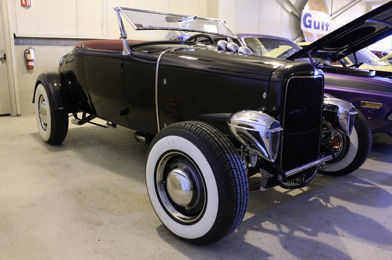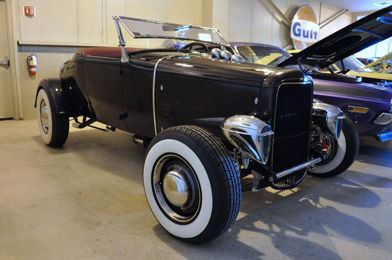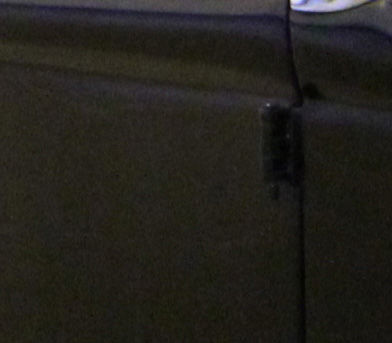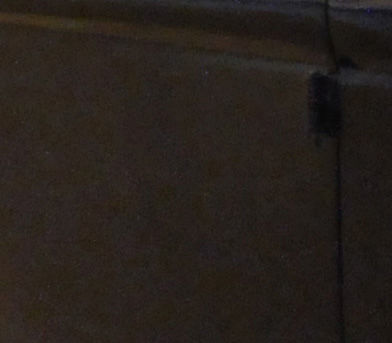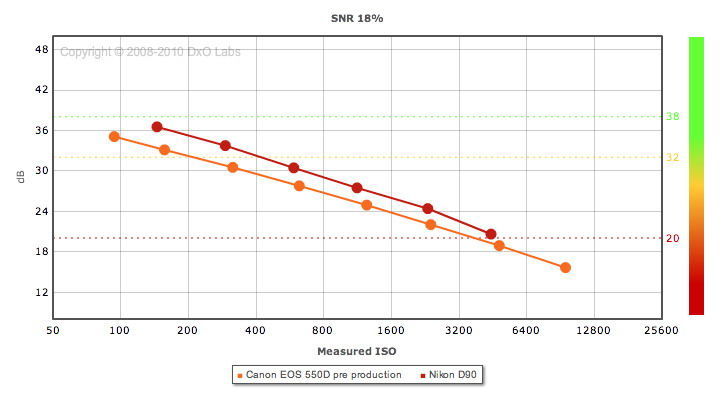Canon EOS 550D vs Nikon D90 side by side
Canon EOS 550D vs Nikon D90 side by side
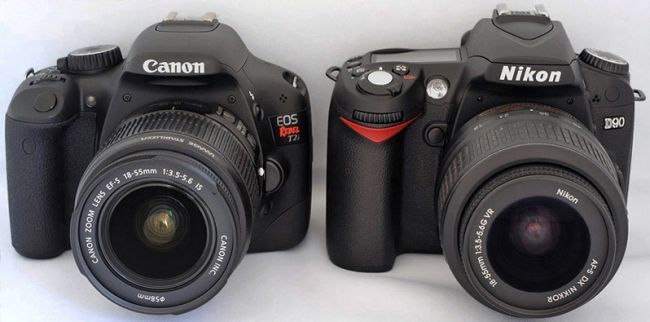
- Canon EOS 550D vs Nikon D90 side by side
- The Canon 550D camera has an 18-megapixel matrix versus the 12.3-megapixel matrix of the Nikon D90
- The 550D offers enhanced Live View (LV) with Phase Detect and Contrast Detect AF
- The Canon 550D offers high ISO performance up to ISO 12,800 versus the Nikon D90's ISO 6400
- The Nikon AF-S DX 18-55mm VR kit lens is superior to the Canon EF-S 18-55mm IS kit lens
- The Nikon D90 offers improved ergonomics over the Canon 550D
- The viewfinder on the Nikon D90 has a pentaprism, unlike the pentamirror on the 550D
- The D90's Active D-Lighting enhances dynamic range
- Nikon D90 offers an advantage over the 550D in terms of flash photography
- The Nikon D90's EN-EL3e battery lasts almost twice as long as the Canon 550D's LP-E8 battery
- Canon EOS 550D vs Nikon D90: conclusions
- Specifications of Canon Rebel T2i/EOS 550D vs Nikon D90
The Canon 550D offers high ISO speeds of up to ISO 12,800 versus the Nikon D90's ISO 6,400: While the Canon 550D's high ISO of 12,800 sounds quite attractive from a marketing perspective, the reality is that it will produce unsatisfactory results. Apparently, this is why Nikon developers limited the maximum sensitivity value to 6400 due to technological limitations, obtaining a more usable image quality.
Both cameras have the ability to set sensitivity to maximum in Auto ISO mode (a feature new to the 550D), allowing the user to maintain the desired lighting and view the scene while focusing on the subject.
The Nikon D90 offers the added benefit of allowing you to select a minimum shutter speed at which the Auto ISO setting is not taken into account. General sensitivity settings can be selected in increments of 1/3 on the D90, and in increments of 1 on the Canon 550D, allowing you to fine-tune sensitivity on the D90.
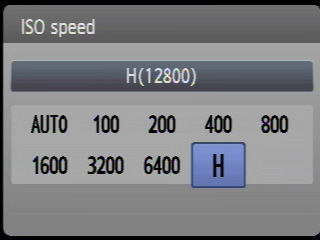
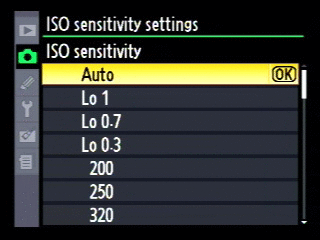
Canon 550D ISO Range
ISO range of Nikon D90
• Available ISO values: Auto, ISO 200 - 3200 in 1/3 stop increments. Low ISO up to (Lo 1) 100 ISO and high up to (H1) 6400 ISO adjustable in 1/3 stop increments
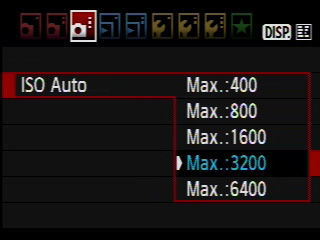
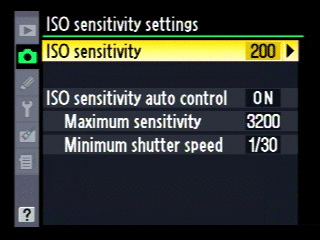
In high sensitivity tests of the Canon EOS 550D and Nikon D90, the D90 begins to show advantages at ISO 800 and above in terms of detail retention. Canon's stronger noise reduction at these ISO values leads to loss and blurring of detail, which can be seen in the test images below.
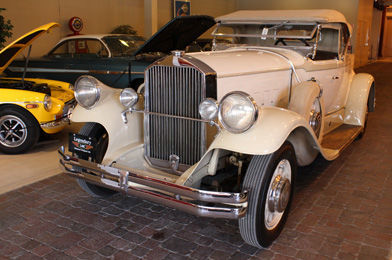
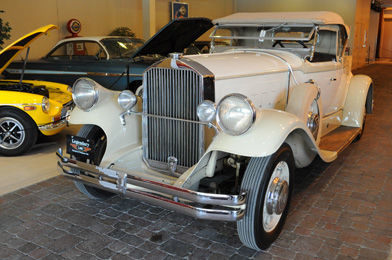
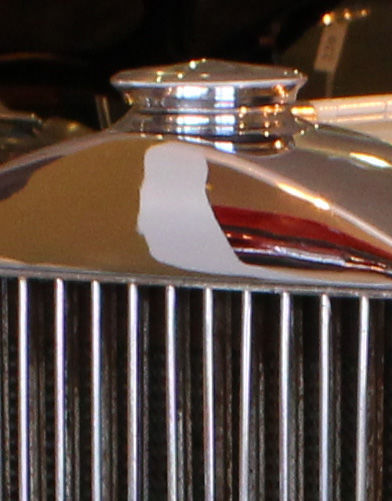
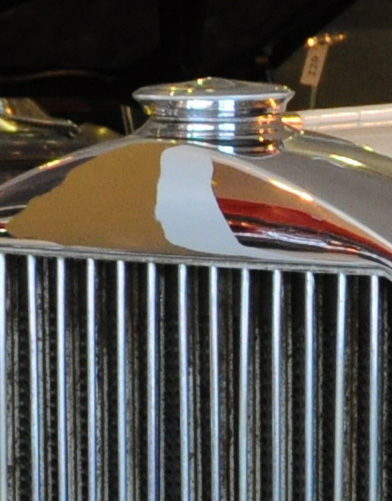
• ISO 800, 1/15 sec., F8 aperture, standard noise reduction
• iFCL evaluative metering, auto white balance
| Canon 550D ISO 800 test | Nikon D90 ISO 800 test |
| • ISO 800, 1/15 sec., F8 aperture, normal noise reduction • 3D color matrix metering, auto white balance |
| Canon 550D ISO 3200 test | Nikon D90 ISO 3200 test |
|
Canon 550D with EF-S 18-55mm IS lens • ISO 3200, aperture priority, 1/13 sec., aperture F8 Nikon D90 with AF-S DX 18-55mm VR lens • ISO 3200, aperture priority, 1/13 sec., aperture F8 The best results can be obtained by shooting in RAW and further processing the images on a computer, which is basically what most users of DSLRs of this level do. In addition to requiring additional processing time, shooting in RAW format also results in larger file sizes than shooting in JPEG format. The sensor on the Nikon D90 provides a higher signal-to-noise ratio compared to the Canon 550D (see definition below the graph). Comparative test results from DxOMark reflecting the signal-to-noise ratio of the Nikon D90 and 550D cameras are shown below.
Signal to noise ratio at 18% gray Signal-to-noise ratio (SNR) shows how much noise is present in an image compared to the actual information (signal). The higher the SNR, the better, as there will be less noise present in the image. The scale is logarithmic (in decibels): +6dB means half the noise (3dB refers to 1 f-stop or 1EV). The SNR here is measured at the average dynamic range of the image (which refers to the 18% reflectivity gray tint usually taken as the average reflectance of a photographic scene). Canon EOS 550D vs Nikon D90 side by side
Canon EOS 550D Kit EF-S 18-55 IS or I’m thinking about buying a DSLR, so far this one is full 0 =)) For now I’m leaning towards Canon, where HD video + number of pixels and support for the new SDXC are again very important for good video recording! |
|
| User menu kolyasca |
| View profile |
| Find more posts by kolyaska |

Of these two, it is most logical to take the Nikon D90, because... he is a class higher. The pictures themselves will be equally good, but Nikon, due to its class, is potentially somewhat more convenient.
Once you go to the store and hold them in your hands, you will understand what we are talking about.
| 06.07.2010, 12:39 | #2 |
| Prometej user menu |
| View profile |
| Visit Prometej home page |
| Find more posts by Prometej |

| 06.07.2010, 12:40 | #3 |
| alexks user menu |
| View profile |
| Find more posts by alexks |

Yes, by the way, you can take both cheaper cameras, but with the same good picture at the output, just save on this in favor of the flash.
For Canon it is 450d and 500d, for Nikon it is d5000.
Or now buy one of the initially planned ones, assuming further purchase of photographic equipment in the future.
| 06.07.2010, 12:52 | #4 |
| Prometej user menu |
| View profile |
| Visit Prometej home page |
| Find more posts by Prometej |

| 06.07.2010, 17:34 | #5 |
| User menu kolyasca |
| View profile |
| Find more posts by kolyaska |

How much money is there enough for? What's the budget?
There is always the option of buying a KIT kit, and only then, after gaining experience and understanding what is needed, think about changing the glass.
| 06.07.2010, 18:01 | #6 |
| Prometej user menu |
| View profile |
| Visit Prometej home page |
| Find more posts by Prometej |

| 06.07.2010, 18:24 | #7 |
| User menu kolyasca |
| View profile |
| Find more posts by kolyaska |

| 06.07.2010, 19:02 | #8 |
| but the camera is new and there are few reviews about it yet. |
And my review that the camera as an independent product is good will suit you?
Don't take it as a joke
I’ll be honest: I have no idea how they make videos, because the latter worries me the least in my life.
But in terms of photos they will be equally good.
In terms of functionality.
| what is there in 550d (except for video) that is not in d90 and vice versa |
They are not different from each other in any way that would not be enough for some tasks.
But they differ in that the d90 class has a larger viewfinder, improved ergonomics, a slightly higher rate of fire and, what is especially nice, a more comfortable grip.
| Prometej user menu |
| View profile |
| Visit Prometej home page |
| Find more posts by Prometej |

| 06.07.2010, 19:42 | #9 |
| User menu kolyasca |
| View profile |
| Find more posts by kolyaska |

kolyasca , tell us in more detail whether you desperately need video from a DSLR camera, or simply “all other things being equal, let this feature also be there, it’s not superfluous.”
In fact, in today's serious cameras, video largely remains an extra feature, and the reasons for this lie in the technical laws of the design.
The design of a digital camera, whether for photos or video, can, in principle, consist of the same elements. But for high-quality video, these elements require something diametrically opposite to what is required for high-quality photography.
That is, either the design will be tailored for high-quality photos and mediocre video, or high-quality video and mediocre photos, or equally mediocre photos and videos, but in a pocket size, and often at the same time also an auto-dialer, mp3 ringtones and a web browser.
If video is not particularly important, but simply “an extra feature wouldn’t hurt,” then here’s an extra feature in the D90 that certainly won’t be unneeded: a built-in commander (IR transmitter) for wireless control of external flashes. If purchased separately, this feature costs several hundred dollars.
| 06.07.2010, 20:00 | #10 |
| Ollivander user menu |
| View profile |
| Find more posts by Ollivander |

| 06.07.2010, 23:05 | #11 |
| Sobutilnic user menu |
| View profile |
| Find more posts by Sobutilnic |

| 18.07.2010, 19:23 | #12 |
| User menu kolyasca |
| View profile |
| Find more posts by kolyaska |

Somehow I don’t really want to help someone who reacts to help with the words “schnelle, schnelle!” and a poke under the ribs with the barrel of a Schmeisser. Then figure it out on your own.
The 550D is a great camera, and if it has everything you need, don’t hesitate to take it, it won’t let you down.
The 50D is more expensive for the job, you can take it with confidence and don’t worry about the price difference with the 550D, but if you like the 550D, then just as easily take the 550D and don’t worry either.
The difference between them is who and why they are addressed. And from here the rest of the differences grow.
Rebels, including the 550D, are aimed at beginners, but are also decently suitable for advanced amateurs and even non-super-wealthy professionals.
Cameras of the 50D class are aimed at advanced amateurs, but are ideal for wealthy beginners and very decent for non-super-wealthy professionals.
Class 7D cameras are aimed at low-income professionals, are very suitable for advanced amateurs and are not at all suitable for beginners. This does not prevent an inquisitive, result-oriented beginner from successfully mastering such a camera as his first one.
The more professional the camera, the more durable it is, the faster its ergonomics from the point of view of an experienced photographer and the more confusing it is from the point of view of an inexperienced one, the more additional features it has that a beginner will never find, and without which an experienced photographer will be will take it off, but howling, swearing, and feeling that he was given a museum obscura instead of a full-fledged device. Something like that.
At the same time, all this is conditional. On the streets of St. Petersburg, one of our Experts had a 50D class camera with an Elka camera stolen in broad daylight. He didn’t buy the same equipment, but bought a Rebel with a non-electronic staff, and has been shooting for a couple of years now. Everything is fine, including getting on the podium of serious competitions (click). So the main thing is not the car, but Schumacher.
Canon 550D vs Nikon D90
18 MP | APS-C (22.3 x 14.9 mm) CMOS Sensor
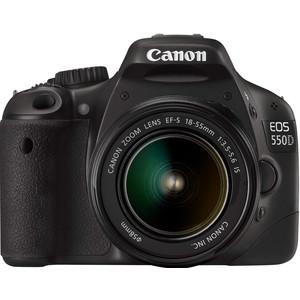

12 MP | APS-C (23.6 x 15.8 mm) CMOS Sensor


Here we are comparing two DSLR cameras from Canon and Nikon. Canon 550D was introduced to market in April 2010 and Nikon D90 was launched in October 2008. As you can see, D90 is 2 years older than 550D. Let's see if this age difference between two cameras makes a big difference.
Both cameras have APS-C sensors but Canon 550D has a 18.0 MP and Nikon D90 has a 12.0 MP resolution.
Let's have a brief look at the main features of Canon 550D and Nikon D90 before getting into our more detailed comparison.
Canon 550D Key Specs
- Announcement Date: 2010-04-01
- 18MP - APS-C CMOS Sensor
- ISO 100 - 12800 (expands to 12800)
- Canon EF/EF-S Mount
- 3″ Fixed Type Screen
- Optical (pentamirror) viewfinder
- 4 fps continuous shooting
- 1920 x 1080 video resolution
- 530g. 129 x 98 x 62 mm
- Also known as EOS Rebel T2i / EOS Kiss X4
- Replaced Canon EOS 500D Compare
Nikon D90 Key Specs
- Announcement Date: 2008-10-13
- 12MP - APS-C CMOS Sensor
- ISO 200 - 3200 (expands to 6400)
- Nikon F Mount
- 3″ Fixed Type Screen
- Optical (pentaprism) viewfinder
- 4.5 fps continuous shooting
- 1280 x 720 video resolution
- 703g. 132 x 103 x 77 mm
- Replaced Nikon D80 Compare
Let's read on the following sections in order to better understand in detail how Canon 550D and Nikon D90 compares and hopefully end up with enough arguments to decide which one is better for you.
| 18.07.2010, 20:51 | #13 |
| Max Sensor Resolution | 18 MP vs 12 MP | 50% more pixels |
| Max ISO | 12.800 vs 3.200 | 300% higher Max ISO |
| LCD Screen Resolution | 1.040k dots vs 920k dots | 13% higher resolution screen |
| Weight | 530 g vs 703 g | 173 g lighter |
| Microphone Port | Yes vs No | High quality audio recording option |
| Max Video Resolution | 1920 x 1080 vs 1280 x 720 | High Resolution Video |
| Number of Focus Points | 11 vs 9 | 2 more focus points |
| Viewfinder Coverage | 96% vs 95% | More accurate viewfinder |
| Continuous Shooting | 4.5fps vs 4.0fps | 0.5 fps faster |
| Battery Life | 850 shots vs 470 shots | 380 more frames with a single charge |
| Flash Coverage | 17.0m vs 13.0m | 4m longer range |
| Color Depth | 22.7 vs 22.0 | higher color depth |
| Dynamic Range | 12.5 vs 11.6 | higher dynamic range |
| Low Light ISO | 977 vs 807 | better High ISO performance |
| Sensor Pixel Area | 30.54 Vµm 2 vs 18.54 Vµm 2 | 64% larger pixel area |
| Top LCD | Yes vs No | Help viewing and changing settings easily |
| Optical Viewfinder Type | Pentaprism vs Pentamirror | Pentaprism Viewfinders are brighter than Pentamirror type |
| Built-in Flash | Yes vs Yes | Useful in low-light |
| External Flash Shoes | Yes vs Yes | Better for flash photography |
| Viewfinder | Yes (Optical) vs Yes (Optical) | Better framing and control |
| RAW Support | Yes vs Yes | Better image quality |
| Face Detection Focus | Yes vs Yes | very handy for portraits |
| AE Bracketing | Yes vs Yes | Useful for tough lighting conditions and HDR |
| Image Stabilization | No vs No | No Built-in stabilization |
| Articulating Screen | No vs No | No flexible viewing angles |
| Environmental Sealing | No vs No | not suitable for tough conditions |
New
Size and weight is a big decision factor when you are trying to find the ideal camera for your needs. In this section, We are going to illustrate Canon 550D and Nikon D90 side-by-side from the front, back and top in their relative dimensions.
Below you can see the front view size comparison of Canon 550D and Nikon D90. Canon 550D is clearly the smaller of the two cameras. Its body is 3mm narrower, 5mm shorter and 15mm thinner than Nikon D90.

Here is the back view size comparison of Canon 550D and Nikon D90.

Weight is another important factor especially when deciding on a camera that you want to carry with you all day. Canon 550D is significantly lighter (173g) than the Nikon D90 which may become a big advantage especially on long walking trips.
Also keep in mind that body weight is not the only deciding factor when comparing two interchangeable camera bodies, you have to also take into account the lenses that you will be using with these bodies. Since both Canon 550D and Nikon D90 have the same APS-C sized sensor, their lenses for a similar focal length and aperture will be similar in size and weight.
Unfortunately neither Canon EOS 550D (EOS Rebel T2i / EOS Kiss X4) nor Nikon D90 provides any type of weather sealing in their body, so you have to give extra care especially when you are shooting outdoors. If weather sealing is a must-have feature for you, check these sections: Top DSLR Cameras with Weather Sealing
LCD Screen Size and Features
Canon 550D and Nikon D90's LCD screens have the same diagonal size of 3″.
Unfortunately, both cameras have fixed screens so they don't tilt or flip in directions.
Canon 550D has a 18.0MP APS-C (22.3 x 14.9 mm) sized CMOS sensor and features Digic 4 processor. On the other hand, Nikon D90 has a 12.0MP APS-C (23.6 x 15.8 mm) sized CMOS sensor.
Canon 550D's sensor provides 6MP more than Nikon D90's sensor, which gives a significant advantage in real life. You can print your images larger or more crop freely. On the other hand, please keep in mind that Max sensor resolution is not the only determinant of resolving power. Factors such as the optical elements, low pass filter, pixel size and sensor technology also affects the final resolution of the captured image.
Below you can see the 550D and D90 sensor size comparison.

As seen above, Nikon D90 has a 1.1x Larger sensor area than Canon 550D. Larger sensors give photographer more control on the depth of field and blurry background compared to smaller sensor when shot in same focal length and aperture.
DxOMark Sensor Scores
DxOMark is a benchmark that scientifically assesses image quality of camera sensors. It scores camera sensors for color depth (DXO Portrait), dynamic range (DXO Landscape) and low-light sensitivity (DXO Sports), and also gives them an overall score. Canon 550D and Nikon D90 sensors have been tested by DxO and the results show that D90 has a better overall score of 73, 7 points higher compared to 550D's score of 66.
Canon 550D Review
for the opportunity to review the Canon EOS 550D .
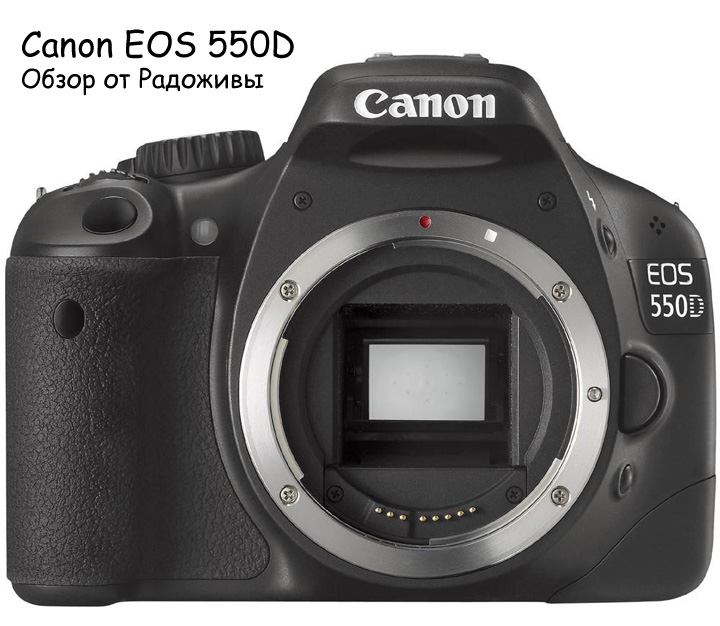
Canon 550D Review
Canon EOS 550D body camera itself . The BODY in the name means that the camera is without a lens, while KIT means that the camera comes with some kind of lens. Usually the Canon 550D comes with one of the following lenses:
- Canon EF-S 17-85mm f/4-5.6 IS
- Canon EF-S 18-135mm f/3.5-5.6 IS
- Canon EF-S 18-200mm f/3.5-5.6 IS
- Canon EF-S 18-55mm f/3.5-5.6
- Canon EF-S 18-55mm f/3.5-5.6 IS
- Canon EF-S 18-55mm f/3.5-5.6 IS II
- Canon EF-S 55-250mm f/4.0-5.6 IS
- Canon EF-S 55-250mm f/4.0-5.6 IS II
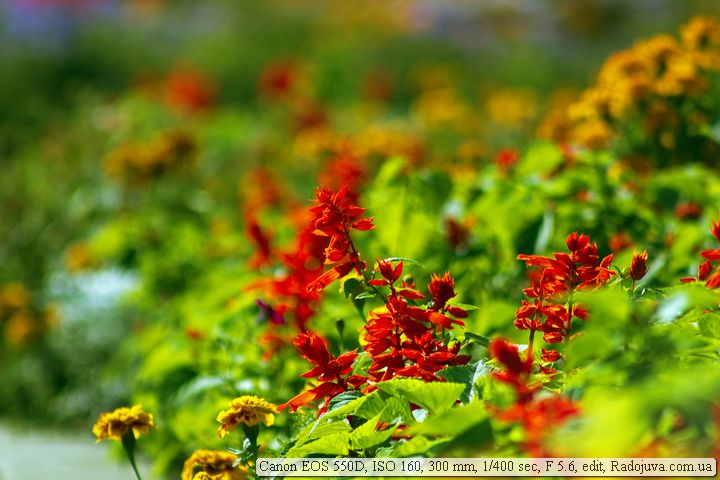
Example photo on Canon EOS 550D
Canon 550D can work with EF, EF-S lenses. This means that any modern lenses from Canon are suitable for it. When using the Canon 550D, you always need to remember the crop factor, which for Canon APS-C cameras is 1.6x.
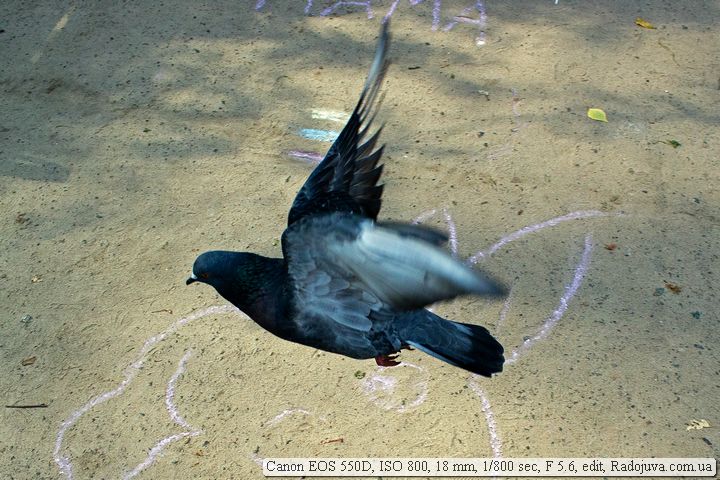
Example photo on Canon EOS 550D
The Canon 550D camera uses 9 focus points . This is neither more nor less. Many Canon cameras use so many focus points. This amount is quite enough for an amateur. In auto focus mode, the camera does a good job of focusing. The Canon 550D uses three conventional focusing modes that can be found in many other Canon cameras. Automatic focusing is very dependent on the lens and shooting conditions.
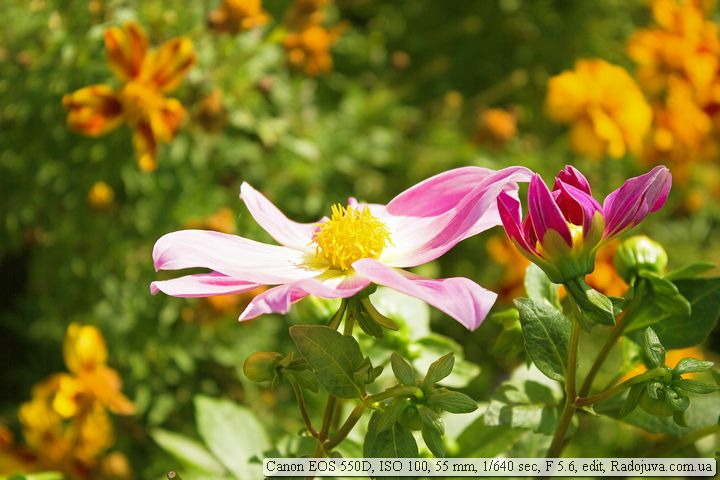
Example photo on Canon EOS 550D
The display of the Canon 550D camera is very good, 3-inch with 1.040 million dots. The same display is found on many other Canon cameras. Compared to the smaller display of the Canon 1100D, the display of the Canon 550D is very pleasant to work with.
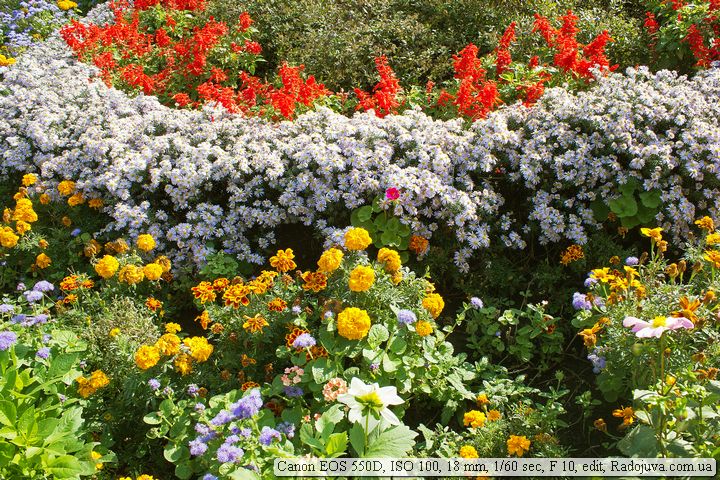
Example photo on Canon EOS 550D
Canon 550D can shoot video in HD quality 1920x1080. You can set the frame rate: 30, 25, 20. Video is the strong point of the Canon 550D; in video mode, you can control the aperture and shutter speed, which allows you to create and control the process of shooting video. By the way, the highlight priority function also works in video mode. Also, the Canon 550D supports installing an external stereo microphone, which is very important for video. You can also shoot in 720p mode with 1280x720 and a frequency of 60 or 50 fps, as well as 640x480 with a frequency of 60 or 50 fps, which allows you to create unique videos with a slow-motion effect.
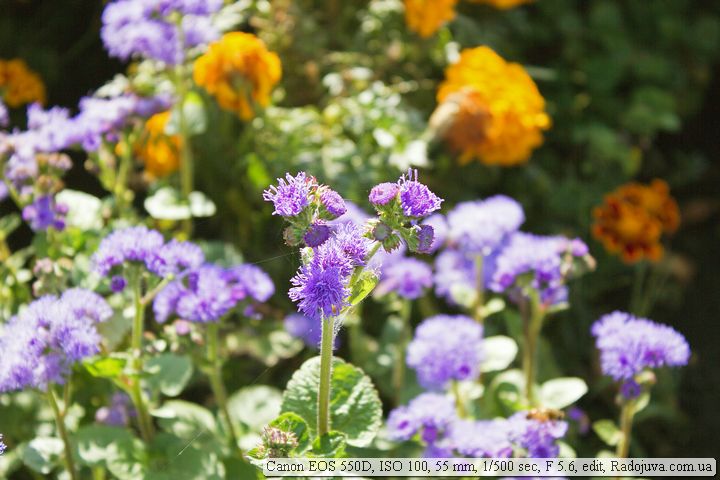
Example photo on Canon EOS 550D
Of course, the camera has a Live View function, which allows you to use the camera as a regular point-and-shoot camera. True, the inconvenience of Live View is that in order to start recording video you need to switch the camera control dial to the desired position. In Live View mode, you can zoom in on an area of the image at 4x and 10x, which is very useful when using older non-autofocus lenses.
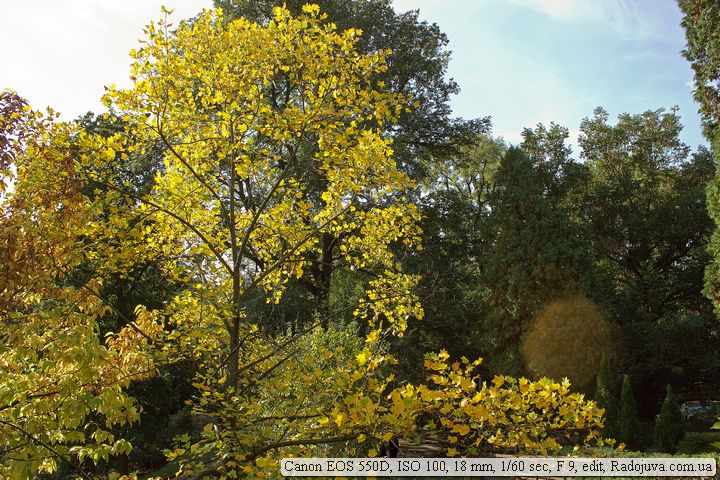
Example photo on Canon EOS 550D
The Canon 550D camera can operate at ISO 100-6400 and expands the range to H (12800). Please note, to expand the range to 12800, you need to disable the highlight priority function in the camera menu and enable the ISO range expansion function in the same menu. The Canon 550D camera performs quite well at high ISO values and does not show as much noise as you might think when looking at its 18MP sensor. Also, please note that when Highlight Tone Priority is enabled, ISO 100 is not available.
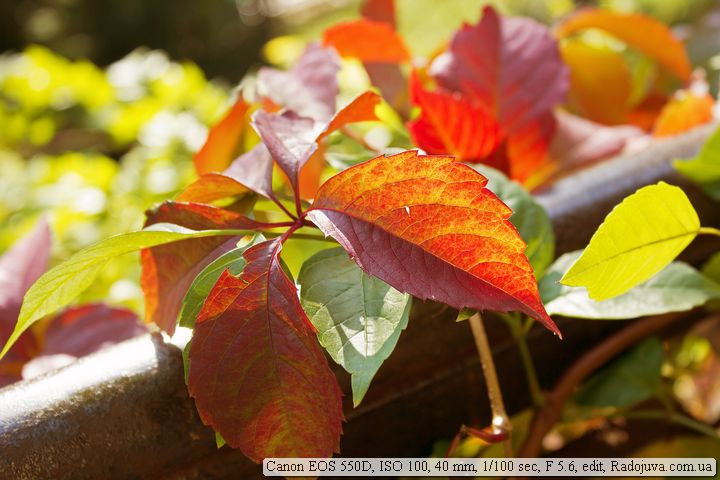
Example photo on Canon EOS 550D
The camera body is made of plastic, it is quite pleasant to hold the camera. The ergonomics are no different from other Canon cameras.
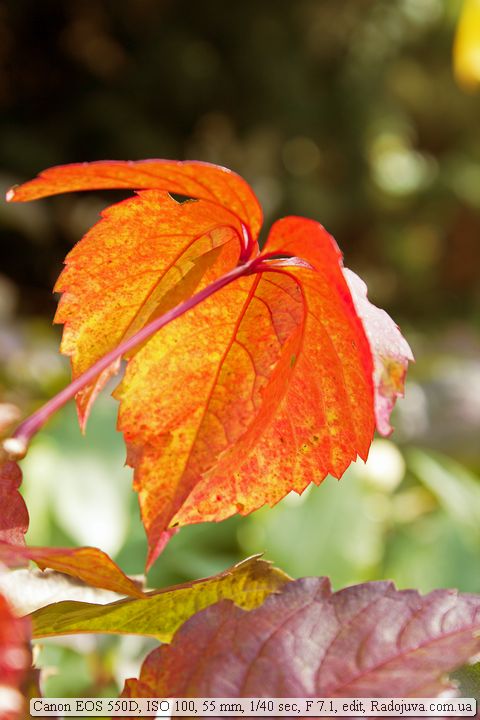
Example photo on Canon EOS 550D
Please note that the Canon 550D is called differently in different countries. So, in the USA - Canon Rebel T2i , in Japan Canon EOS Kiss Digital X4 , we have Canon EOS 550D . True, I have never seen cameras labeled Rebel T2i or Kiss Digital X4 , but on the Internet you can find what they look like.
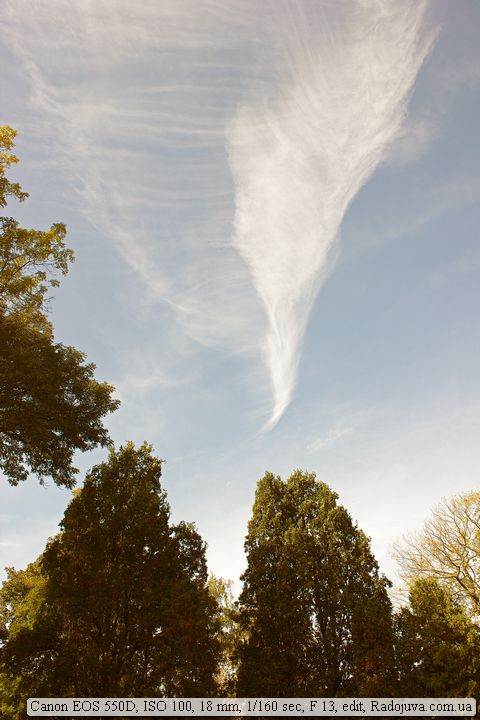
Example photo on Canon EOS 550D
The Canon 550D does a good job of metering exposure. The exposure metering system is the same as that of the Canon 7D, built on a 63-zone sensor. In any case, in difficult working conditions, exposure metering can fail, just like automatic white balance.
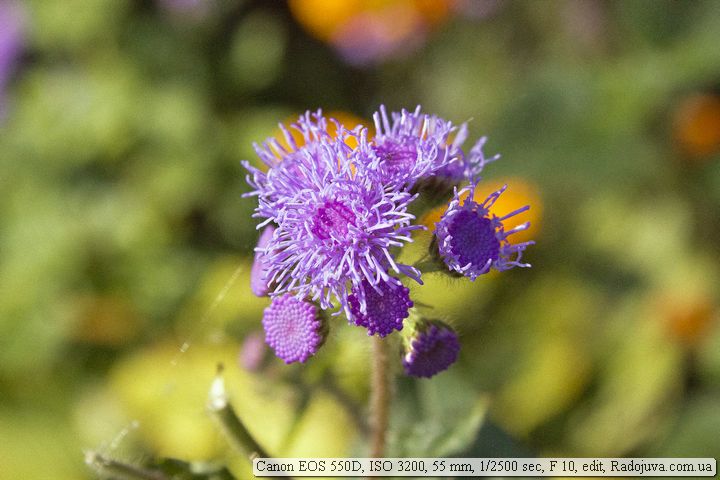
Example photo on Canon EOS 550D
Canon 550D uses SDHX, SDHC, SD memory cards. The copy from this review works well with SDHC 32GB, SDHC 16GB. Since the camera is very power hungry due to the huge number of megapixels, I recommend using the fastest memory cards possible. The camera shows the number of pictures that can fit on the free space of the card. On average, a RAW file weighs from 17 to 36MB, and a JPEG L weighs from 2 to 10MB.
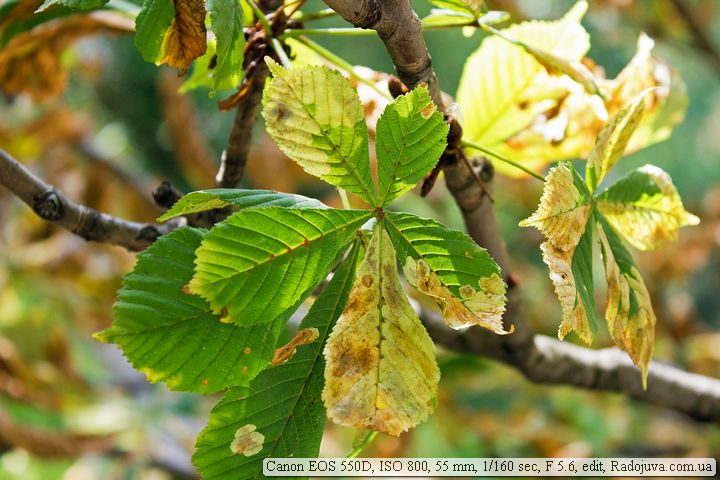
Example photo on Canon EOS 550D
One of the most important indicators of camera performance and speed is the frame buffer, or more precisely, its capacity. The Canon 550D's image buffer can hold:
- RAW without extras functions - 6 frames
- JPEG L without additional functions - 9 frames
- JPEG L without additional functions at high ISO - 8 frames
- RAW with additional functions - 4 frames , but the camera continues to shoot as if there are 5-6 frames in the buffer
- JPEG L with add. functions - 2 frames , but the camera continues to shoot as if there are 5-6 frames in the buffer
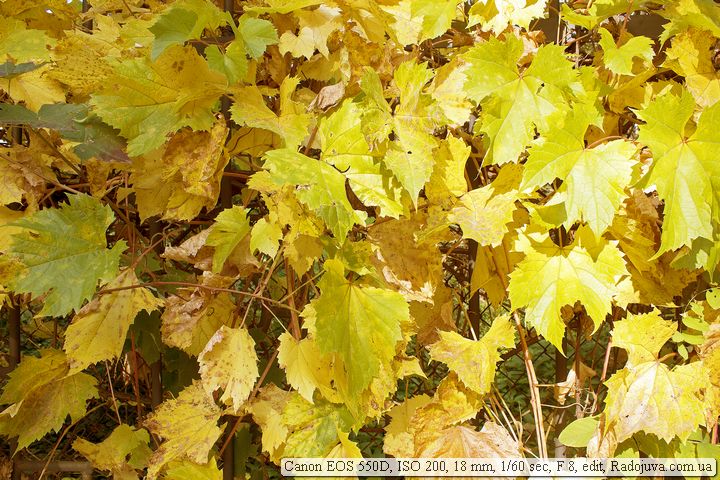
Example photo on Canon 550D
The most important indicator is the frame buffer capacity in RAW mode, and at any ISO value, it is a maximum of 6 frames. After 2 seconds of shooting in continuous mode, the camera starts to slow down and write BUSY. This is a fairly low figure. Also, note that additional features such as Highlight Tone Priority, high ISO noise reduction, and slow shutter speed noise reduction greatly reduce the number of frames in the frame buffer. The good news is that the Canon 550D uses 14-bit RAW.
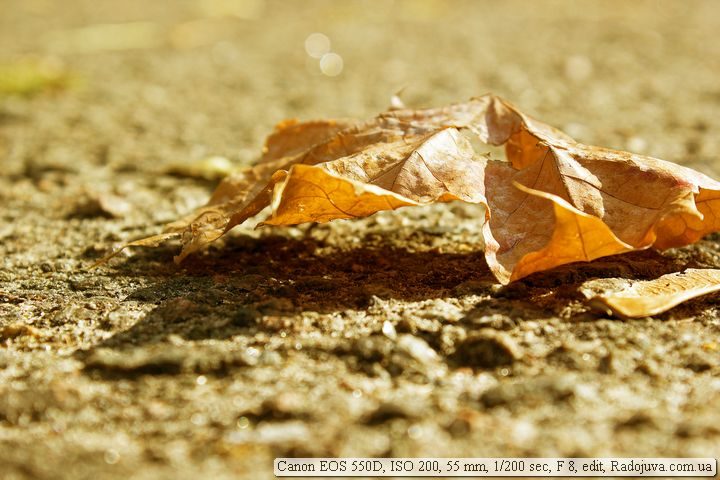
Example photo on Canon 550D
The Canon 550D uses a huge 17.9 megapixel CMOS sensor that can produce an image of 5184 by 3456 pixels. In reviews you can find information that the Canon 550D has a whole 18.7MP, this is not true, since the camera has only 18.0 effective pixels, but when creating a JPEG image, you get a picture that includes only 17.9MP. The difference is negligible; in any case, the Canon 550D has a simply stunning number of pixels. You can easily print A1 size posters from the Canon 550D camera. Most likely, the Canon 550D uses an upgraded matrix from the professional Canon 7D. Similar 18MP matrices can be found in the advanced amateur Canon 60D, specialized Canon 60Da and similar amateur cameras Canon 650D and Canon 600D.
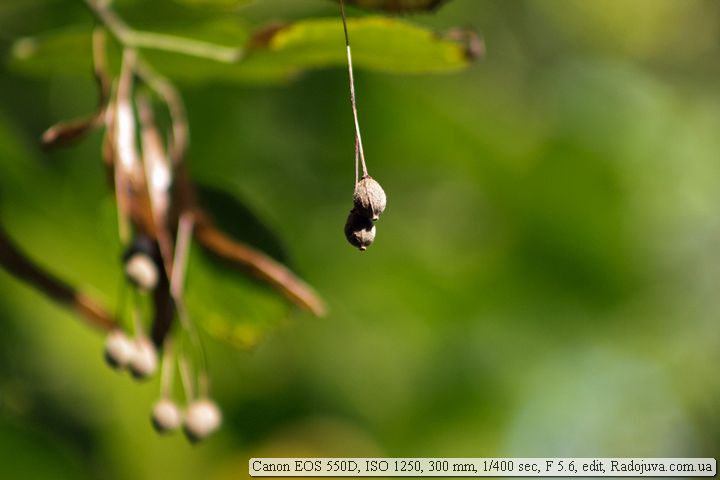
Example photo on Canon 550D
Roughly speaking, the Canon 550D can produce the same quality images as the Canon 7D. Creating a matrix is very expensive, therefore the same matrix is often used in different camera models.
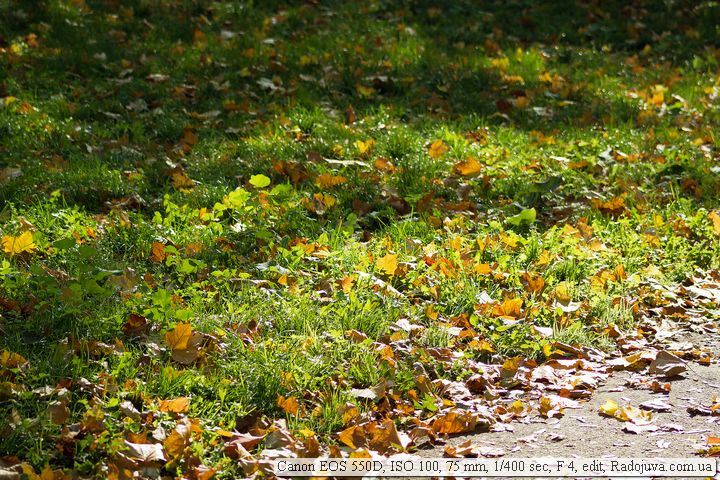
Example photo on Canon 550D
The Canon 550D's continuous shooting speed is not high, and is only 3.7 frames per second. This is neither little nor much, given the camera’s small buffer, serial shooting can only work properly with JPEG image quality and a good, high-speed memory card.
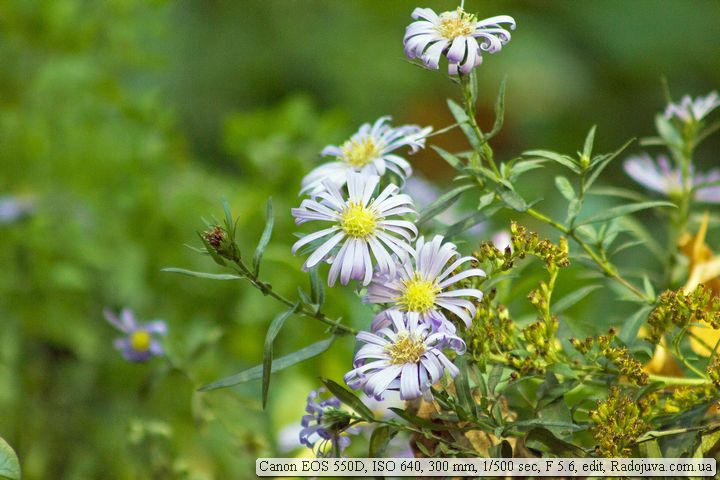
Example photo on Canon 550D
Canon 550D has useful features:
- A special indicator that determines whether the camera is brought close to the face. The indicator turns off the display when focusing is done through the optical viewfinder. Nice feature.
- Highlight Tone Priority function . This feature takes a slightly underexposed photo and software expands the dynamic range, pulling information from dark areas.
- Convenient special button that is responsible for setting ISO
- Canon 550D has a sensor cleaning system . The function is configured to clean the sensor when turned on or off, or forcefully.
- Red-eye reduction for photos taken with flash.
- Noise reduction function at high ISO values. Has several efficiency values. A very useful thing when shooting in JPEG.
- Long exposure noise reduction function.
- Peripheral lighting control (vignetting) function
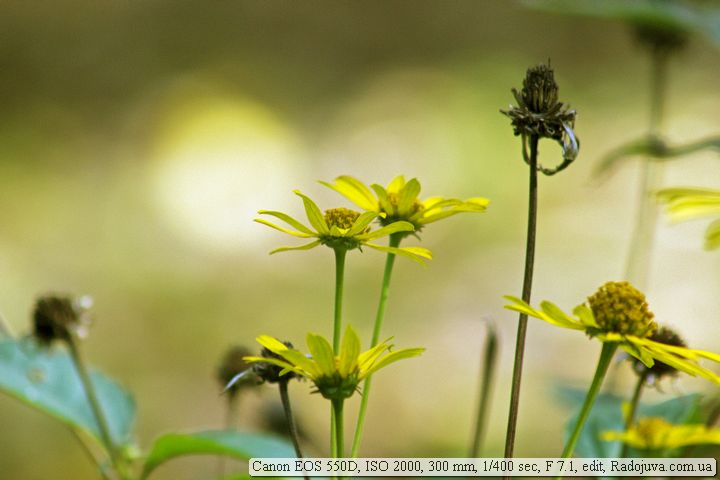
Example photo on Canon 550D
What the Canon 550D lacks compared to advanced amateur cameras:
- Fast flash synchronization. Minimum synchronization is only available at 1200s.
- The ability to control flashes remotely, which greatly helps when creating interesting lighting effects
- An additional display for quick access to settings, for example, like the Canon 60D.
- Short shutter speed 18000. The Canon 550D has a maximum shutter speed of 14000, this sometimes makes it difficult to work with high-aperture optics in good lighting.
Examples of photos without processing:
Canon EOS 550D
Studio test and conclusions

When testing SLR cameras, we use the Carl Zeiss Planar ZS 50/1.4 (M-42) lens, kindly provided by the Kutuzov-photo company. Read more about the testing methodology...
Test still life (what is this?) and color rendering test (what is this?)
At its lower sensitivity of ISO 100, the Canon EOS 550D exhibits the highest level of image detail. Thanks to the 18-megapixel matrix and the use of good optics, you can see every hair of the doll in the test still life. Noise is not visible in the photographs. Color rendition is natural and quite accurate. When increasing ISO up to 400 units inclusive, nothing changes in the nature of the image. Noise is practically invisible, and there is no loss of detail. At ISO 800, subtle, fine monochrome noise becomes noticeable in the shadow areas of the frame. At ISO 1600, noise grains in the shadows become slightly earthier, and detail is slightly reduced in dark areas of the frame. But this ISO value remains fully operational. At ISO 3200 there is a significant reduction in detail. The color rendition changes slightly. Images taken at this ISO value are nevertheless suitable for printing even in relatively large formats. ISO 6400 can be called conditionally working. The image is no longer so highly detailed; the results of the noise reduction system are clearly visible in the pictures. Large patches of colored noise are noticeable in the shadows. But even such frames can be printed in formats up to A4. But we would not recommend using ISO 12800 in practice. The image degrades too much at this sensitivity value.
Despite all the skepticism of opponents of this camera, the use of an 18-megapixel matrix did not lead to an increase in the noise level. The camera processor can handle it easily. But the Canon EOS 550D has extremely high detail for cameras with APS-C frame format.
Detail test (what is it?)
The camera was tested with a Canon EF-S 18-135mm f/3.5-5.6 IS lens, well known to us from the Canon EOS 7D test. The lens, which performed well with the older model, turned out to be up to par this time too (especially considering that the lens belongs to budget optics).
Unfortunately, the large minimum focusing distance of the lens in the wide-angle position did not allow us to correctly capture our test pattern. We present photographs taken with focal lengths of 35 and 135 mm. The lens showed a good level of detail, especially considering the fact that the Canon EOS 550D has the highest pixel density of all modern APS-C cameras (here we do not take into account the Canon EOS 7D, equipped with the same sensor and tested with the same lens ). But an equally important advantage of the EF-S 18-135mm f/3.5-5.6 IS is the very high focusing speed it provides.
For those who are wondering what configuration to buy a camera in, we would recommend buying it with this lens.
Stabilizer test (what is it?)
Stills shot at an equivalent focal length of 216mm and a shutter speed of 1/50 sec. Stabilizer off:





Stills shot at an equivalent focal length of 216mm and a shutter speed of 1/50 sec. Stabilizer included:





conclusions
It just so happens that the domestic photographer is prone to some redundancy when it comes to choosing photographic equipment. And if a person buys his first camera, then it often becomes a DSLR, and sometimes even a semi-professional one. But in the case of the Canon EOS 550D, we would recommend that future buyers moderate their ardor and set their sights on this, albeit amateur, model. The use of a sensor and image processing algorithms similar to what we saw in the sophisticated EOS 7D makes the Canon EOS 550D one of the leaders in its class. The noise level in particular and image quality in general on the Canon EOS 550D are at the level of many semi-professional level cameras (or even surpass them). Video capabilities are not far behind. Videos can be recorded in Full HD resolution at up to 30 frames per second, using a remote microphone and manually controlling exposure. The main differences from higher-end cameras lie in ergonomics (the EOS 550D is much more compact than semi-professional “monsters”), controls (it is not so quick, especially choosing the focus point) and design (plastic body without moisture protection). The continuous shooting speed of the Canon EOS 550D is at the amateur level - 3.7 frames/s. But don’t forget about the “lighter” price of this device compared to more high-end models.
***Pros: * highest image quality up to ISO 6400; * shooting video in Full HD format with a frequency of up to 30 frames/s; * the ability to use an external microphone for video recording; * convenient on-screen menu; * sensor to turn off the display when brought to the eye; * 3-inch display with resolution increased to 1,400,000 pixels; * convenient Live View mode with phase detection and relatively fast contrast autofocus.
***Disadvantages * inability to directly select the focus point; * lack of image post-processing functions.
Our resume
It looks like Canon has once again rolled out an uncompromising amateur DSLR to the market. The use of an 18-megapixel matrix did not have a negative impact (as many predicted at the time of the announcement of the Canon EOS 550D), but rather a positive effect on image quality. No other amateur DSLR can currently boast such a level of detail and such a low noise level. Among the advantages of the Canon EOS 550D are video shooting in Full HD format and a simple and intuitive control interface. What else does an amateur DSLR need? During the entire testing period, we were able to find only one drawback with this device - inconvenient selection of the focus point. In all other respects, the Canon EOS 550D is simply an ideal camera for the amateur.
VaD89RUS › Blog › 1. Tourism and travel: Canon EOS 550D

Yesterday I bought myself a CANON EOS 550D DSLR, spent a long time choosing it, looked through a bunch of material on the internet, and finally chose it. Since I’m new to this business, please don’t bother me about taking photos, I think I’ll soon learn how to take normal photographs, for now I’m just learning the camera and its functions. I also bought a 32 gig class 10 flash drive. Below I attach a description of the camera, I took it here maddoxart.net/index.php?o…&task=view& >
Canon EOS 550D camera review
Less than a year ago, the Canon EOS 500D was released and now, to build on its success in this segment of cameras just above the entry level, Canon is bringing its replacement to the market - the EOS 550D. However, the 500ka will still be on the shelves for some time along with the new camera.
Speaking about the new Canon EOS 550D camera, it should immediately be noted that this is not an improved EOS 500D, but still, perhaps, much simplified in terms of controls and some PRO-class functionality of the EOS 7D, which immediately positions the camera, despite its index, somewhat higher in class than the previous one. What does the new camera get from the EOS 7D? Let's list the main things:
1. 18 MP CMOS matrix (according to Canon, similar, but still slightly different from 7D). Like the EOS 7D, the micro lenses fit right next to each other with no gaps compared to the EOS 500D, but are the same size (as the sensor under the lens), which significantly increases the efficiency of each pixel and allows you to fit more of them on unit area at least without degradation of image quality due to noise.
2. The camera received a 63-zone dual-layer iFCL metering system. This system uses focus, color and light data to determine the correct exposure. In addition, all focal points provide distance information for a more accurate exposure algorithm. Conventional systems are more sensitive to the red part of the light spectrum. The iFCL system has separate light-sensitive layers, the first of which is sensitive to the red and green parts of the spectrum, and the second is sensitive to blue and green. The system's algorithm compares the signal level from each layer and adjusts the exposure system as a whole more accurately.
1. The camera received a completely new display with a resolution of more than a million pixels with an aspect ratio of 3×2, unlike 4×3 on other cameras, which firstly increases the efficiency of using the screen area (corresponding to the dimension of the camera frame) and secondly, it is much better for work with video with a 16×9 aspect ratio.
The real viewing angle of the screen is 160 degrees. 2. “Q” button for quick access to setting camera parameters through the graphic display, which makes controlling the camera much more convenient than through the general menu (the 7D actually has the same button in addition to the dedicated control buttons while on the 550 It is the main one in accessing the management of shooting parameters. Nevertheless, it is a very operational function).
3. The separate Live View/Video button is now in a more convenient place to use.
4. Now through the main menu you can set the maximum permitted sensitivity (ISO) in automatic mode (Auto ISO)
5. Exposure compensation adjustment is +/- 5 steps, which is now no different from competitors (made at the request of users).
Compensation can be combined with bracketing +/- 2 stops. 6. The ISO button has become more recessed, of a different shape and size - noticeably more convenient.
I find it easier and more intuitive to change ISO without taking your eyes off the viewfinder. 7. CA (Creative Auto) user settings seem to be new on the EOS 50D.
But I think that on entry-level and slightly higher-level cameras this function is perhaps more in demand. In principle, the purpose of all settings is intuitively clear from the icon images. Controls are the same (Q button, wheel, SET, cursor) 8. Compared to 500, the burst speed, despite the larger file size, has increased - 3.7 fps versus 3.4.
However, due to the larger file size, the buffer now holds less before it is full: 34 Jpeg/Fine or 6 RAW versus 170 Jpeg/Fine or 9 RAW. 9. The camera now has the ability to record information about the Copyright of the author of the pictures, just like in older cameras (or almost the same).
10. The battery discharge level has become 4 levels.
11. Added support for the latest SDXC format (in theory for now, but up to 2 terabytes in the future).
12. New battery grip, which may not please those who were hoping to use the old one when switching to a new camera.
The battery and the compartment itself in the camera are also different. 13. The viewfinder remains unchanged compared to the EOS 500D.
However, this is probably the brightest Penta-mirror viewfinder on the market. In size, it practically coincides with the main current competitor for the EOS 550D - Nikon D5000. The viewfinder field of view covers 95% of the frame. 14. The focusing system is apparently inherited from the EOS 500D - 9 points with a central cross-shaped sensor (for many novice photographers, I think this is too much... :).
15. You can change the screen color settings. There are 4 options in total.
1. Video has become full HD (1920x1080p) with the ability to choose 30 (NTSC), 25 or classic 24 frames per second.
HD and VGA received 50/60 frames (PAL/NTSC) instead of 30 on the 500th, which also gives some new opportunities for video enthusiasts in the subsequent processing of the footage. 2. A completely manual video shooting mode appeared (which greatly pleased many of my “film makers” friends).
Shutter speed (shutter speed), aperture and ISO are adjustable. 3. During video shooting, you can use autofocus, and in the “By image” mode (which would actually be more correctly called “by contrast” in Russian), autofocus works without stopping video shooting (below is an example of how this works).
4. In Live view, you can select the following options for shooting video (also using Q and the wheel): White balance, Picture style, dynamic range optimization, image file(s) type for taking photos while shooting video, resolution, and frames per second, auto focus type.
5. Sound during video shooting can now be recorded in stereo when using an external appropriate microphone, for which there is an input for a 3.5 mm plug. This feature will allow you not only to record stereo sound, but also to remove the noise of the camera itself, but most importantly, the noise of rotating the zoom ring and the focusing ring, beyond the microphone's polar pattern.
The inexpensive EF-S 18-135/3.5-5.6 IS lens included in this camera package is not nearly as bad as some might think.
The first thing that immediately catches your eye is that the lens has an ultra-fast ring autofocus drive motor. Even in room conditions with dim electric lighting, focusing on the center point occurs almost instantly! Bravo to the manufacturer!
Despite a slightly lower dynamic range (similar to the EOS 7 D) and the lack of graphical and very visual assistance for novice photographers compared to its main competitor, which at the moment is the Nikon D5000, the Canon EOS 550D camera simply “blows the nose” in almost all other technical parameters in comparison with other cameras in this price segment. I would say that in some respects it is superior to more expensive cameras from other manufacturers.
The appearance of this camera will make other manufacturers of SLR photographic equipment think a lot. A new round of the “arms race” has apparently already begun...
Important note: Despite its amateur status, the Canon EOS 550D is quite suitable for professional work in many genres. To get the best results and unlock the full potential of the camera, it is recommended to use high-quality optics (L).
Canon vs. Nikon: what is the significant difference, which is better? (Part 1)
There is a favorite and at the same time hackneyed topic that I would like to speak on. This is a selection and discussion of two direct competitors in the world of High Photography, and the eternal question of the average person, which is better, nikon or canon ?
I know that there are so many people with so many opinions, I know how belligerently the users of this or that system are against each other, but I will allow myself to speak on this matter. Moreover, recently, this is acquiring more and more nuances, in connection with the release of new cameras from both companies.
Both Canon and Nikon make excellent DSLR cameras that offer fantastic image quality and similar features. Because there are so many similarities between brands, many people think that it doesn't matter which brand you end up choosing. I believe that in the right hands, either of them will produce great results, but there are important differences between these brands that may influence your decision on which camera to buy.
Which is better nikon or canon ? In this article, we will not discuss the merits of SLR cameras from other brands, which, by the way, may sometimes be even better than Canon and Nikon in some ways. At different times I worked with Sony, Pentax and some other brands. They make good cameras, but the only reason we won't discuss them today is because over 90% of the people reading this site today use Canon or Nikon camera equipment. I think another time we’ll talk about other brands.
Advantages of Nikon SLR cameras:
Good quality in low light. Over the past two years, few would argue that Nikon generally has superior low-light photo quality than comparable Canon cameras.
- Number of autofocus points. Most people will agree with me, most Nikon cameras have more autofocus points than their Canon counterparts. When you hold a camera in your hands, you will understand how important this is. Sometimes the low number of autofocus points on Canon cameras prevents you from focusing where you want, forcing the photographer to change the focus point and then the composition.
- Flash control . For a long time Nikon was in the lead, but today Canon is catching up with it in this parameter.
- Larger APS-C sensor. Nikon uses a larger digital sensor in its cameras, which even with fewer pixels gives a clearer picture. This applies to full frame cameras. For Nikon, these are all DSLRs except D3, D3S, D3X, D4, D700 and D800; For Canon, these are the EOS 600D, Canon EOS 550D, 500D, 1000D, 450D, 400D, 350D, 300D, 60D, 50D, 40D, 30D, 20Da, 20D, 10D, 7D, D60, D30 models.
- Attention to small details . A controversial issue, but still. It is believed that Nikon is more user-friendly in terms of additional amenities and nice little things on the camera.
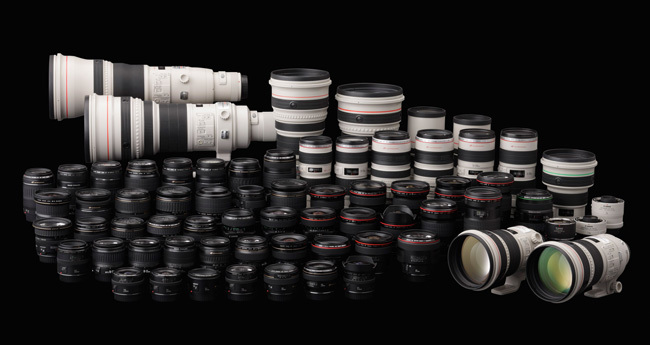
Advantages of Canon SLR cameras:
- Video . Pointless to discuss, but go to vimeo. Almost all the best ones were shot on Canon. Nikon is starting to catch on with 1080p video and good autofocus systems in its latest models, but is still far behind Canon in this aspect. Canon DSLRs offer higher frame rates.
- Price . Nikon cameras and lenses are often slightly more expensive than Canon ones. Obviously there are exceptions, but if you look at the range of DSLR cameras and popular lenses, Nikons typically cost around 8-10% more than comparable Canons. I think the difference in price is why more people use Canon.
- Number of megapixels . Most photographers pay great attention to this, because it is convenient to be able to work with a large number of megapixels. Canon is usually a bit ahead in terms of pixel count.
- Availability . When Canon announces a new camera, you can expect to get your hands on it within a short period of time. When Nikon announces a new camera or lens (especially more expensive models) it often takes 4 to 6 months.
- Motor! All modern Canon lenses have built-in motors. With Nikon, everything is a little different, and you may have to overpay later for a lens with a motor; lenses also do not always fit the cameras.
- I came across the fact that it is easier to buy an adapter for Canon than for Nikon in order to use Soviet lenses, of which I have a lot and which I really wanted to experiment with.
Here is a short video on the topic of which is better nikon or canon , in which the famous blogger and traveler Sergey Dolya talks about his thoughts on this issue.

